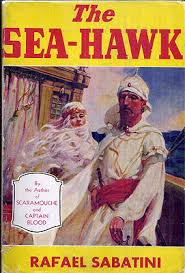Sir Oliver Tressilian is in a good place. As one of Elizabeth I’s privateers, he has made a fortune and gained the Queen’s favor. He is also engaged to marry the woman he loves, Rosamund Godolphin, or at least she has promised herself to him. When he calls on her brother Peter to ask for her hand, though, Peter refuses it, determined to keep up the feud begun between their parents. Indeed, he is insulting to the proud Sir Tressilian, so much so that Oliver would have killed him had he not promised Rosamund he would not.
Peter’s refusal seems of little moment to Oliver, because Rosamund will soon be of age. When Oliver’s brother Lionel returns home, however, he has fought with Peter without witnesses and killed him. Oliver promises to protect him but later learns that the wounded Lionel left a trail of blood to his door and everyone thinks Oliver murdered Peter. When Oliver tries to speak to Rosamund, she refuses to hear him. He is able to prove he is innocent to a magistrate and a minister because he has no wounds, but Rosamund will not listen.
Lionel becomes frightened that Oliver will tell the truth, so he arranges with a shady sea captain, Jasper Leigh, to kidnap Oliver and sell him into slavery. Jasper Leigh actually intends to let Oliver buy himself back, but their ship is taken by Spain and both Oliver and Jasper end up as galley slaves.
When next we meet him, Oliver is named Sakr El-Bahr, the Sea-Hawk, for his famous acts of piracy. He has adopted Islam and is a chief of Asad-ed-Din, Basha of Algiers. He learns that his brother and Sir John Killigrew have had him declared dead and Lionel has taken over his property and his former fiancée. Upon hearing this, Sir Oliver sends a messenger to Rosamund with the proof of his innocence in her brother’s death, but she throws it unread into the fire. Oliver is overcome with anger against both Lionel and Rosamund. How will it end?
I thought this was a very interesting swashbuckler, mainly because both the hero and heroine have more dimensions than in the usual adventure tale. There are times when both of them behave very badly, and I especially disliked Rosamund for much of the book because she was so quick to distrust Oliver. However she is also more brave and self-possessed than the majority of adventure story heroines. They get into some seriously exciting situations.
This is my last book from my second Classics Club list, which I have finished a couple of weeks late, so I’ll be publishing another list tomorrow.


